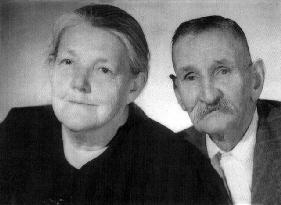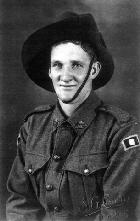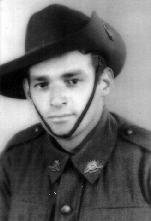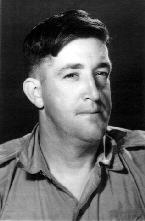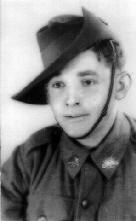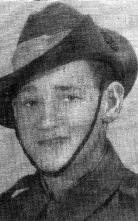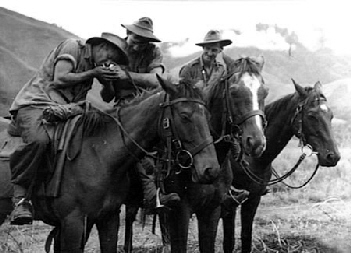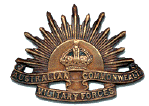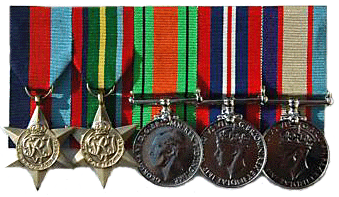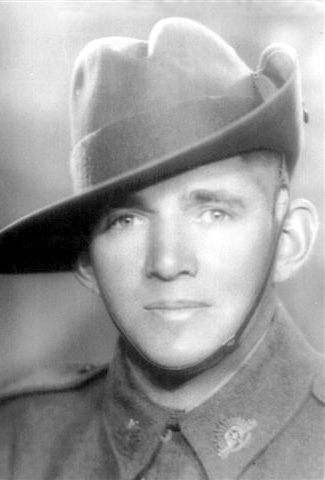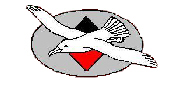8 July 1943: Wau-Mubo Area. This Transport Unit carries stores to men at forward areas over some of the roughest country in New Guinea. Pictured are: VX9552 Sergeant David (Jigger) Hutchins, 2/6th Battalion, of Rainbow, Vic, and VX4520 Corporal Keith John Corrin, 2/6th Battalion, of Tyabb, Vic, light up before starting out on the track.
3 November 1942: Northern Territory. Corporal R.F . Wilshire of headquarter company, 2/8th Australian Infantry Battalion pointing out to a class receiving instruction on the Boyes anti tank rifle, the vulnerable places on a Bren gun carrier. Corporal R.F Wilshire (1): Private C Boyes (2): Private W. Scott (3): VX7200 Private P.J Matthews (4): VX7047 Private N.R Harris (5): VX9208 Private R.J Dean (6): VX13706 Private G.E Hutchins (7): VX14478 Sergent J.E Ferguson (8): VX3479 Corporal G.W. Hall (9).
PrivateVX50460 - (Cousin) Thomas Hutchins, 2/21st btn - C Company. Served on Ambon Island. He enlisted on the 5th of March 1941. Tom was one of 6 brothers who served during the Second World War. Four of Tom's brothers served overseas and one in Australia. All survived the war. Thomas who was a cousin to the Hutchins brothers, and was in the same prison camp as David and Fred (Tan Tui), was one of the last men to die on the Island. He died 20 days after the Japanese surrended. Tom was the son of John and Janet Hutchins, of Rainbow in Victoria. Tom is buried on Ambon Island.
31 January - 3 February 1942
The island of Ambon was a strategically important target for the Japanese because of its two airfields. The island was defended by Gull force (2/21st Battalion) and by several hundred Australian gunners and a force of 2,600 Dutch Indonesian troops.
The commander of the 23rd Brigade, Brigadier E. F. Lind, had known since may of his probable task to command a Battalion Group known as "Gull Force" to Ambon and another Battalion Group, "Sparrow Force" to Timor. During the following months he was to press Army Headquarters in Melbourne for permission to make a liaison visit to the Dutch headquarters on Java. Permission was constantly refused so that neither Lind nor his commanders knew what to expect.
Lind's orders to move his Battalions came on 7 December 1941, just hours before the first bombs were to fall at Pearl Harbour.
He had to send 1,100 men in all to Ambon: the 2/21st Battalion, an anti-tank troop, a section of engineers, a detachment of signallers and medical and service personnel.
The Battalion CO, Lieutenant Colonel L. N. Roach, had no idea what he was expected to accomplish and had received no clear orders.
Gull Force's commander had appealed throughout December 1941 for additional reinforcements and equipment, mainly artillery, anti-tank guns, mortars and automatic weapons. He sent constant warnings to Army Headquarters in Melbourne that his force was inadequate to defend vital points on the island. On January 10 1942 Lind signalled Army Headquarters that an attack was expected soon.
Then three days later, he sent another signal suggesting that if his force was attacked it could not hold out for more than 24 hours. Roach recommended that , to avoid purposeless waste of life, he evacuate his force immediately. Army Headquarters was quick to react and Roach was told that such messages were to "cease at once". The next day however, Roach was sacked as CO.On 28 January 1941 the remaining Hudson Bombers were withdrawn to avoid their destruction in the mounting enemy raids. Along with them went all RAAF personnel. Except for eleven men whose boat was intercepted by the Japanese, all the RAAF personnel made it back to Darwin. The new Commanding Officer, Lt-Col Scott, was disturbed to find that no plans had been made to store supplies in the hills in order that if the island fell to the Japanese a guerrilla war could be waged.
The Japanese invasion of Ambon commenced on 30 January 1942 and within a day the Dutch native troops began surrendering. On 3 February Lt-Col Scott surrendered the main body of his Battalion. Fifteen Australians had been killed.
Across the bay from where Scott was, several companies of the 2/21st put up a furious defence of the beach and airfield at Laha. Overwhelmed on 2 February the 309 Australian officers and men were butchered by the Japanese in a series of mass executions as 'reprisals' for the sinking of an enemy vessel by a Dutch mine.






